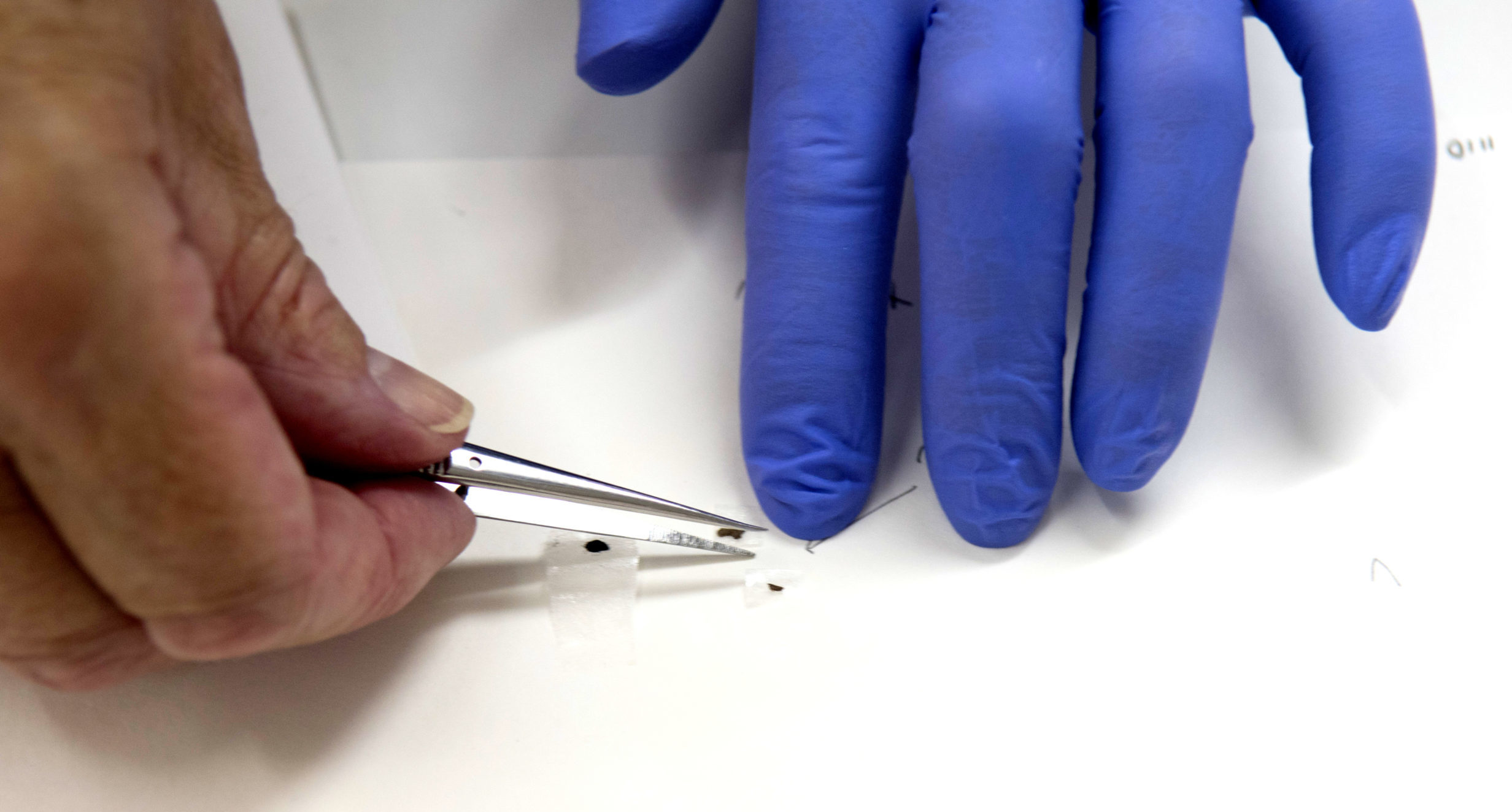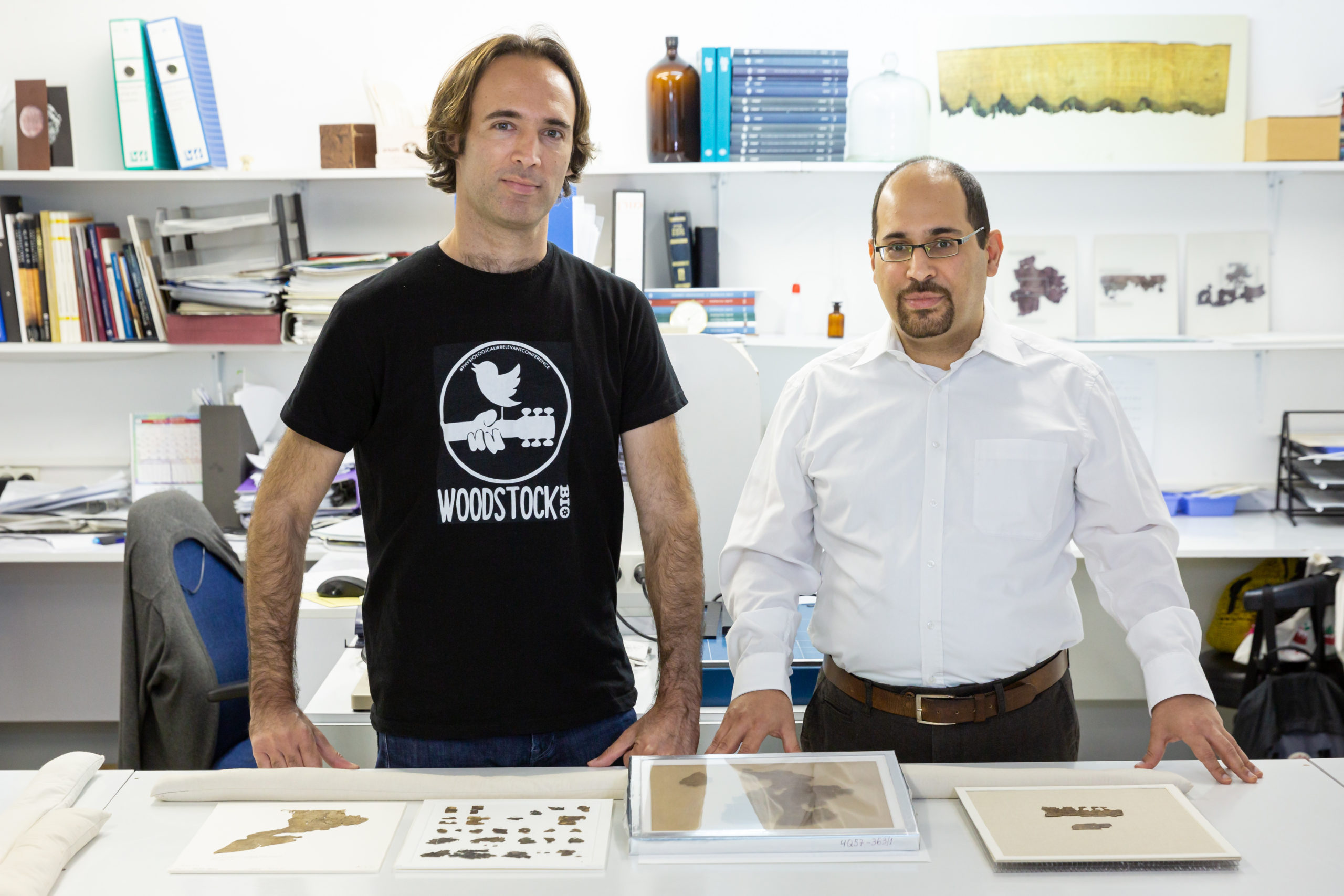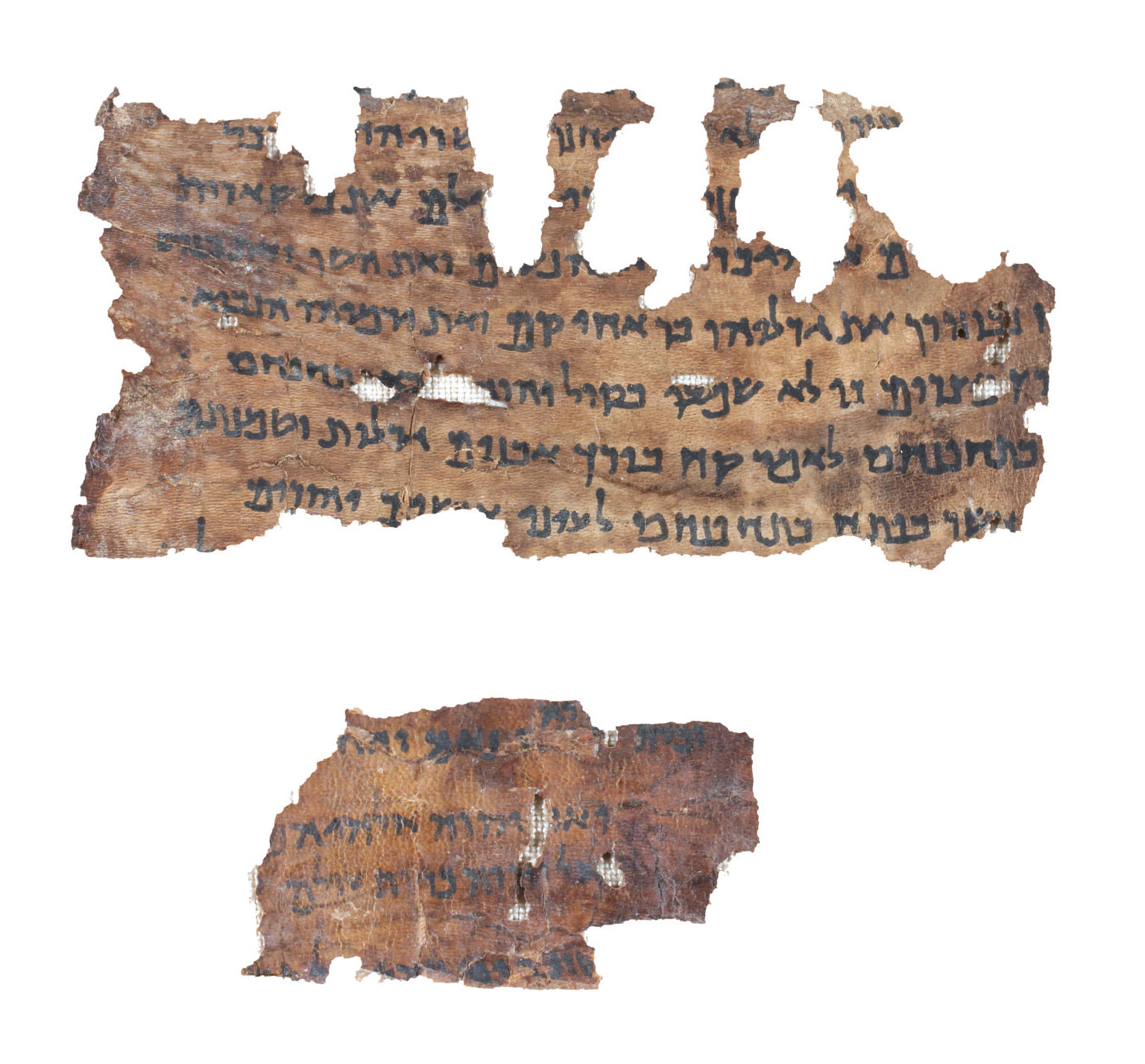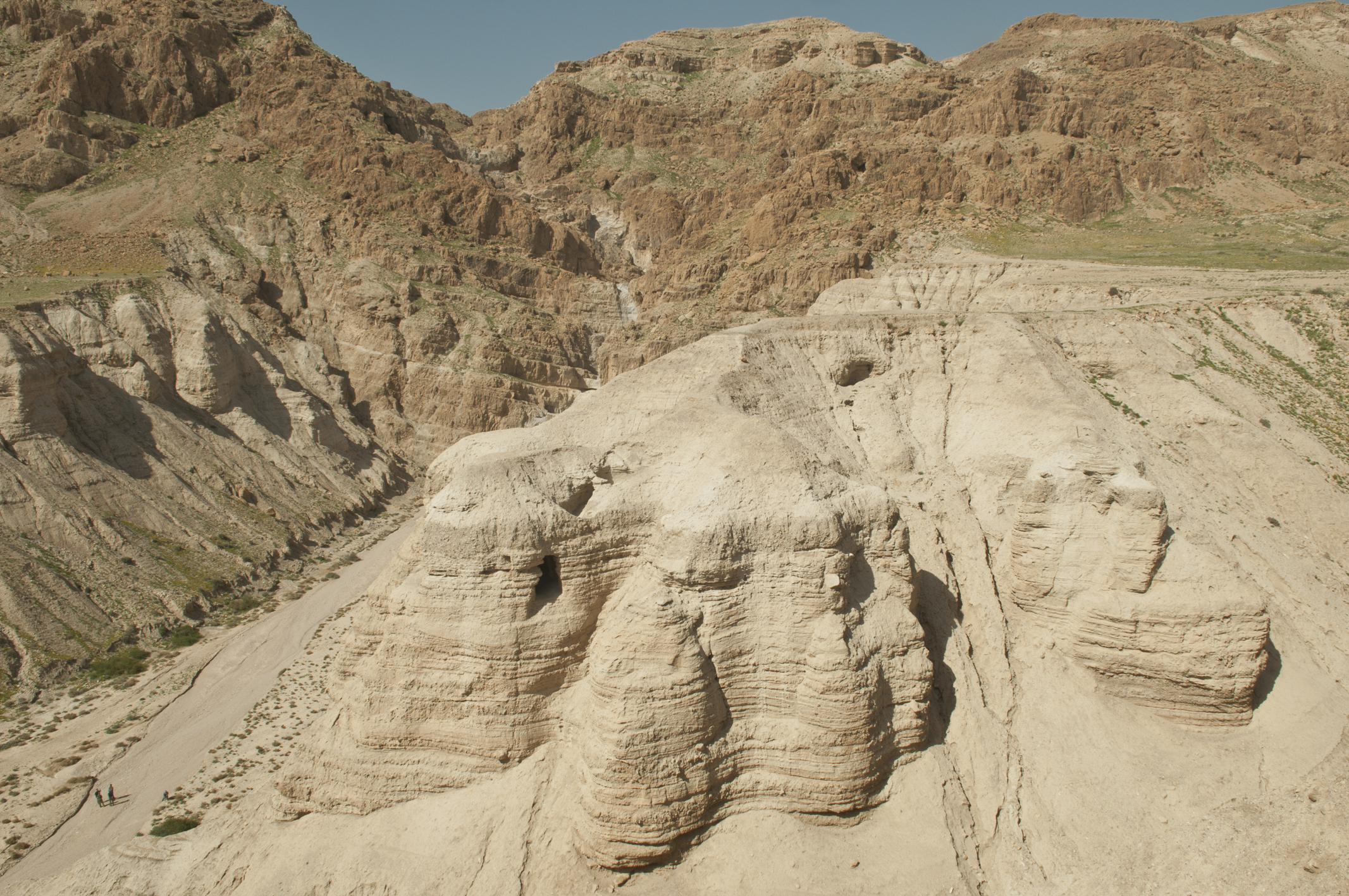Advanced genetic analysis of 2,000-year-old scrolls provides insights into Second Temple Judaism, researchers say
Using cutting-edge DNA extraction techniques and advanced computer algorithms, researchers have successfully unraveled some of the most pressing historical secrets of the Dead Sea Scrolls.
In research conducted over the past seven years, an interdisciplinary team from Tel Aviv University, the Israel Antiquities Authority (IAA), Sweden’s Uppsala University and Cornell University decoded the ancient DNA from the animal skins on which the scrolls were written. They were able to accurately determine the genetic relationships between various fragments, which could have far-reaching implications for the wider historical context of the scrolls. The full results of research are being published as the cover story of the Cell journal this week.
“We found that we can extract meaningful information from the DNA of the Dead Sea Scrolls,” Prof. Oded Rechavi of Tel Aviv University’s Life Sciences Faculty told The Media Line. “Analyzing the DNA of the animals from which the scrolls were made could shed light on the relationship between different pieces and also on the history of the scrolls as a collection.”

Sampling DNA from a Dead Sea Scroll. (Shai Halevi/Israel Antiquities Authority)
The Dead Sea Scrolls are made up of some 25,000 fragments of leather and papyrus and feature some of the oldest known copies of biblical texts, produced between the third century BCE and the first century CE. They were discovered near Qumran on the shores of the Dead Sea as well as other sites in the Judean Desert between 1947 and 1956, and most are currently housed in the Israel Museum’s Shrine of the Book, in Jerusalem.
Researchers had to overcome several technical obstacles in order to examine the genetic makeup of the Dead Sea Scrolls. First and foremost, Rechavi said, they were unsure that it would be possible to extract enough authentic ancient DNA for proper analysis as DNA degrades over time. On top of this, scientists had to rule out any possible contaminants from modern sources, as the fragments had been handled by humans on several occasions.
“Now that we know that it is possible, we can ask all sorts of questions,” Rechavi affirmed. “This is the first project of its kind. From this new technique and this very unique collaboration of people from many different fields … we can learn quite a lot of very surprising and interesting things about the scrolls.”
The team also developed new computer algorithms to analyze the genetic data that was gleaned from the tiny samples the IAA was able to provide – which sometimes consisted only of scroll “dust.”
“A few years ago, it was very difficult [to do] but now the techniques are much more sensitive and you can extract DNA from tiny amounts of material,” Rechavi said. “We were standing on the shoulder of the giants who developed this field. People have analyzed ancient DNA from parchment in the past, but not parchment that is this old.”
Several surprising discoveries have so far emerged from the research. While scholars previously held that the Dead Sea Scrolls were written on goatskin, it was found that the majority were made from sheepskin.
“The genetic analysis tells us a lot of information, which we can then combine with what we know from the text and create a more coherent and complete historical picture that tells us a lot not only about the scrolls but also about the period,” Prof. Noam Mizrahi of Tel Aviv University’s Biblical Studies Department told The Media Line.

Prof. Oded Rechavi (left) and Prof. Noam Mizrahi of Tel Aviv University. (Tadmit/Tel Aviv University)
Scholars have long tried to piece the thousands of fragments together and debated whether they were produced by a radical sect or reflect the wider Jewish society of the time. Some believe that the Essenes, an extremist Jewish sect that flourished during the Second Temple period (roughly two millennia ago), wrote the ancient manuscripts, while others hold that another currently unknown Jewish sect might be behind them.
“We can’t prove with certainty that a particular fragment was written by Essenes,” Mizrahi stressed. “What we can say is that our analysis shows that the scrolls can be roughly classified into two main groups: one that could have been produced locally, and the other that was brought from the outside.”
Notably, scientists found that two of the samples they examined made of cowhide, indicating that not all the scrolls come from the same geographic region or library and also that they may not have all been produced by the same extremist sect.
“Cow husbandry requires a lot of grass and a lot of water; it cannot be conducted in the desert,” Mizrahi explained. “So presumably the scrolls which were made of cowhide were produced elsewhere and not locally. Sheep-made scrolls could theoretically be produced locally or brought from the outside; we don’t know that for sure.
“Now we know that some scrolls definitely represent the broader cultural milieu of the period and this allows us to make generalizations about the period at large,” he said.
In respect to the cowhide fragments, researchers found two distinct fragments from the Book of Jeremiah, representing different versions of the same book and different from the biblical text as it is known today. While a Torah scroll today is virtually identical all across the globe, Mizrahi noted that in biblical times there were different versions of the same book.

Jeremiah Dead Sea Scroll. (Shai Halevi/Israel Antiquities Authority)
“In Qumran, we find in the very same cave different versions of the same book,” Prof. Mizrahi explained. “This fact suggests that the concept of scriptural authority – emanating from the perception of biblical texts as a record of the Divine Word – was different in this period from that which dominated after the destruction of the Second Temple. In the formative age of classical Judaism and nascent Christianity, the polemic between Jewish sects and movements was focused on the ‘correct’ interpretation of the text, not its wording or exact linguistic form.”
Yet another fragment that underwent analysis turned out to have a distinct genetic signature from other scrolls in Qumran, raising the possibility of as-of-yet undiscovered caves that have yet to be properly excavated.
“This was like a pilot [project],” Pnina Shor, founder of the Dead Sea Scrolls Unit at the Israel Antiquities Authority, related to The Media Line. “We sampled about 26 different manuscripts but the results are really promising. There might be more surprises.
“The reasons these scrolls were put in caves is probably because the people who put them there were running away from someone and hid them there,” Shor added.

Cave 4, Qumran near the Dead Sea. (Shai Halevi/Israel Antiquities Authority)
While the groundbreaking findings have so far raised a number of tantalizing questions about the origins of the Dead Sea Scrolls and their authorship, much remains to be discovered.
“We still have thousands of puzzle pieces that we don’t know where to place in order to create meaningful text that we can then contextualize historically,” Mizrahi emphasized. “Our hope is that when we sample more scrolls fragments, we will be able eventually to create a genetic ID for each sample that will enable us to piece together these puzzle pieces.
“A lot has been done, but a lot still remains to be done.”